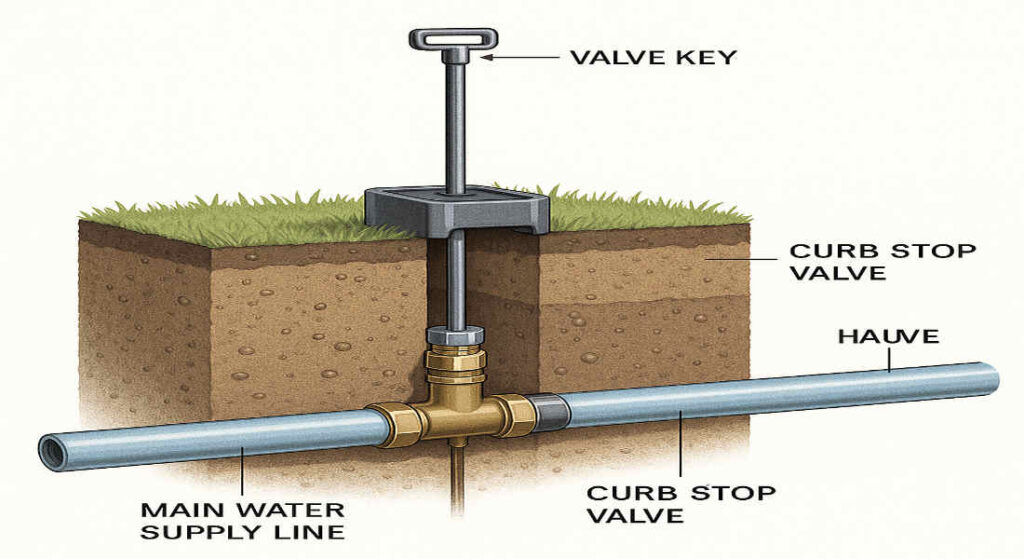Home plumbing systems are the backbone of modern living, ensuring a reliable supply of water for daily needs and efficient waste disposal. While most homeowners are familiar with basic plumbing fixtures, such as faucets, sinks, and toilets, some less obvious components play a crucial role in water management.
One such essential yet often overlooked plumbing feature is the curb stop valve. Understanding what a curb stop is and how it works can empower homeowners to respond effectively during emergencies, conduct repairs, or even manage water usage more efficiently.
Understanding the Basics: What Is a Curb Stop in Home Plumbing?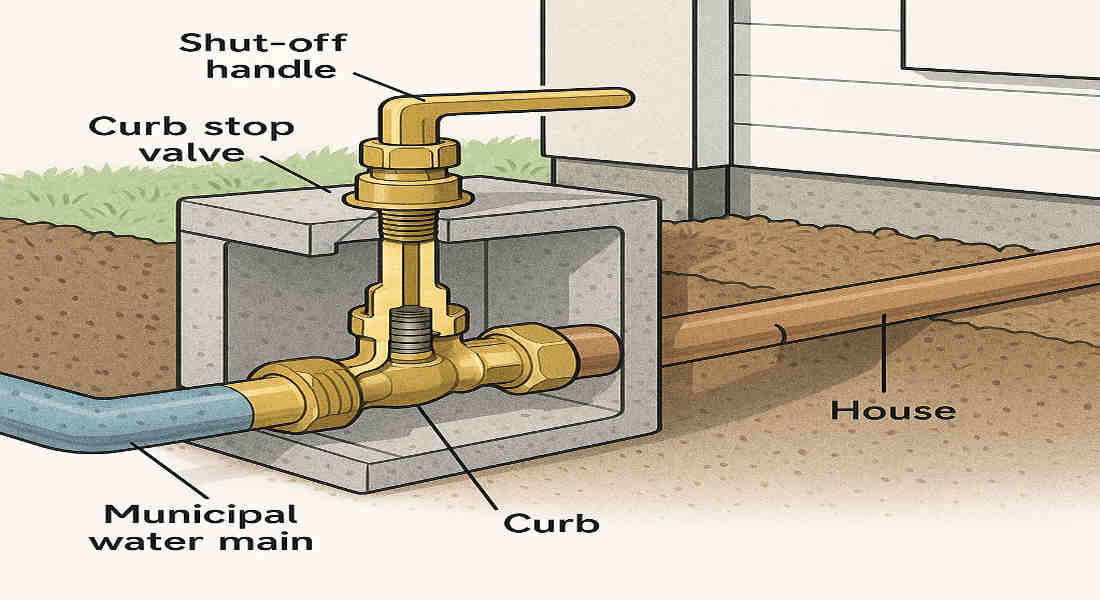
A curb stop valve is a specialized valve that controls the water supply to a property. It acts as the main on/off switch for water flowing from the municipal supply line to your home’s plumbing system.
Unlike the main shutoff valve inside your house, which is usually located in the basement or near the water heater, the curb stop is positioned outside, typically underground, near the property line or sidewalk. It serves as a critical point of control for water management and is especially useful during emergencies or significant repairs.
How Does It Differ from Other Plumbing Valves?
- Main Shutoff Valve: This valve, typically located inside the house, allows homeowners to shut off the water flow within the property.
- Curb Stop Valve: Situated outside, it controls the water supply from the municipal line to the house.
The curb stop is crucial because it allows water to be shut off without entering the home. This is especially useful for water utility companies, plumbers, or during situations where the house is vacant.
Why Is It Important?
The curb stop plays a vital role in water supply management. It can:
- Prevent water damage during emergencies, such as pipe bursts.
- Enable repairs or maintenance on the water line without disrupting the municipal water flow.
- Facilitate water shutoff if the property is vacant or undergoing renovation.
Understanding this small yet powerful valve can save you time, money, and unnecessary stress when dealing with water-related issues.
The Function and Importance of a Curb Stop Valve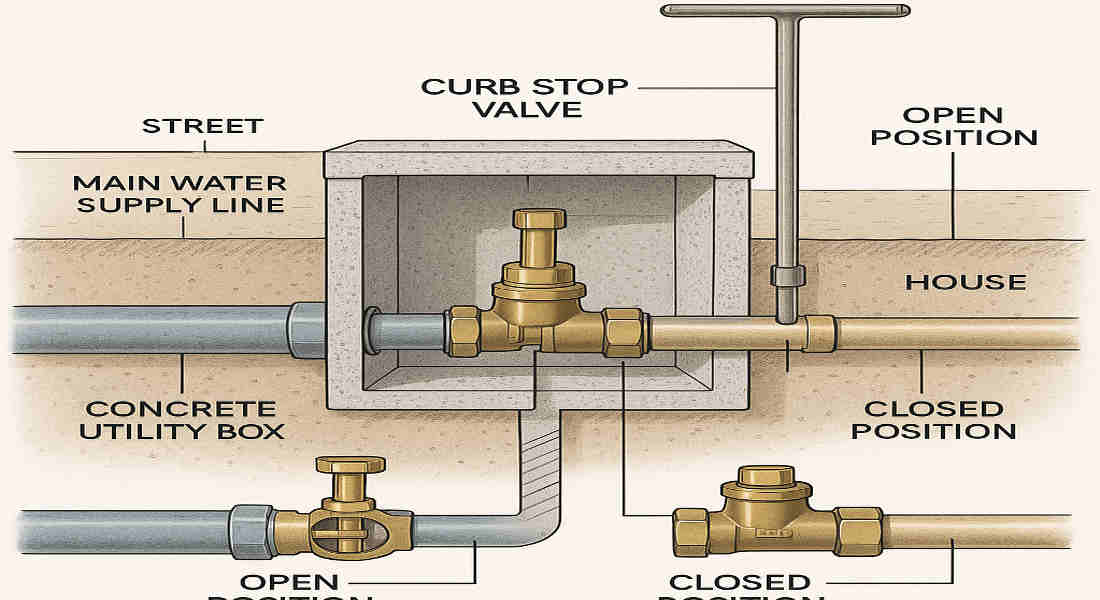
The curb stop valve acts as the intermediary between the municipal water supply and your home. Its primary function is to regulate water flow, but its importance goes beyond this simple operation.
You may also read (exploring rpz a vital component of house plumbing).
Key Functions of a Curb Stop Valve
- Regulating Water Flow: It allows water utility companies or homeowners to control the flow of water to the property.
- Emergency Water Shutoff: In the event of a burst pipe or major leak, the curb stop provides a quick way to shut off the water flow, minimizing damage.
- Facilitating Repairs and Maintenance: Plumbers often rely on the curb stop to isolate the property’s water supply for repairs or upgrades.
- Managing Vacant Properties: Water can be turned off at the curb stop to prevent leaks or damage in unoccupied homes.
Why It’s Vital for Water Conservation
By using the curb stop effectively, water waste can be reduced significantly. For instance:
- It prevents unnecessary water flow during repairs.
- It enables water companies to detect and isolate leaks in their supply lines.
Collaboration with Local Utilities
In most areas, curb stops are installed and maintained by municipal water companies. Homeowners are typically responsible for knowing their location and ensuring they’re accessible. Local regulations may vary, so it’s always a good idea to check with your water utility provider.
Where to Find the Curb Stop in Your Home Plumbing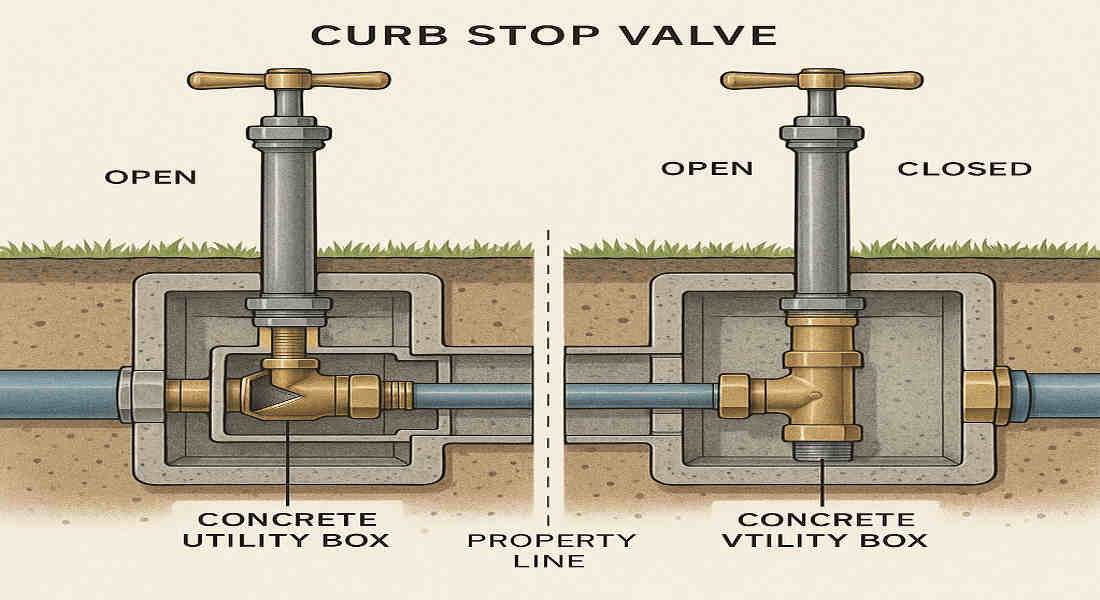
Locating the curb stop valve can be tricky, especially for new homeowners. However, understanding its typical placement can make the search easier.
Common Locations
- Near the Curb or Sidewalk: As the name suggests, the curb stop is often located near the curb or sidewalk, close to the property line.
- Underground in a Valve Box or Pit: It’s usually housed in a small box or pit below ground level, marked by a metal or plastic lid.
How It Connects to Your Home
The curb stop is part of the service line that connects the municipal water main to your home’s plumbing. It sits between the two, making it a critical control point for water entering your property.
Variations in Location
In some cases, the exact placement of the curb stop depends on local utility standards and regulations. For instance:
- In urban areas, it may be closer to the sidewalk.
- In rural areas, it may be located near the property line.
Tips for Locating Your Curb Stop
- Look for a metal or plastic lid near the sidewalk or curb.
- Check with your local water provider for maps or guidance on its location.
- Use a metal detector if the lid or box is buried under soil or grass.
How to Identify a Curb Stop Valve
Once you’ve located the curb stop, how can you be sure it’s the right valve? Here are some key physical and functional characteristics to help you identify it.
Physical Features
- Shape and Size: Curb stops are typically small and cylindrical in design.
- Materials: Most are made of brass, copper, or cast iron to withstand underground conditions.
- Valve Box: They are housed in a box or pit with a lid labeled “Water” or “Curb.”
Types of Valves
There are two main types of valves used in curb stops:
- Gate Valves: These valves utilize a gate mechanism to regulate water flow.
- Ball Valves: These rely on a rotating ball with a hole to control water flow.
You may also read (what to expect at an open house in vancouver).
Tools Needed
To operate a curb stop, you’ll need a curb stop key or wrench. These tools are designed to fit the valve and provide leverage for turning it.
Step-by-Step Guide: How to Locate and Operate Your Curb Stop How to Identify a Curb Stop in Home Plumbing
How to Identify a Curb Stop in Home Plumbing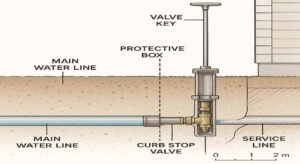
Operating a curb stop requires caution and the right tools. Follow these steps to locate and use it safely:
Preparation
- Gather Tools: You’ll need a curb stop key, gloves, and possibly a flashlight.
- Safety First: Be cautious of underground utilities and wear protective gear.
Step-by-Step Instructions
- Locate the Valve Box: Refer to the tips in Section 3 to identify the curb stop.
- Remove the Cover: Carefully pry open the lid to access the valve.
- Insert the Key: Fit the curb stop key into the valve’s operating nut.
- Turn the Valve:
- Clockwise to shut off water.
- Counterclockwise to turn it back on.
- Test the Water Flow: Check inside the house to confirm the water supply is off or restored.
If the valve is stuck or hard to turn, avoid forcing it. Instead, call a professional plumber or your water utility company for assistance.
Common Issues and Maintenance Tips for Curb Stops
Over time, curb stops can develop issues that hinder their functionality. Here’s how to identify and address common problems:
Common Issues
Issue Cause Solution
Leaks , Corrosion, or wear Professional repair/replacement
Valve Stuck Sediment buildup Apply lubrication or seek help
Difficulty Turning Lack of use Regular operation to prevent rust
Maintenance Tips
- Inspect the curb stop annually for signs of wear or damage.
- Keep the valve box clear of debris.
- Periodically operate the valve to ensure it remains functional.
You may also read (clean plumbing pipes at home).
